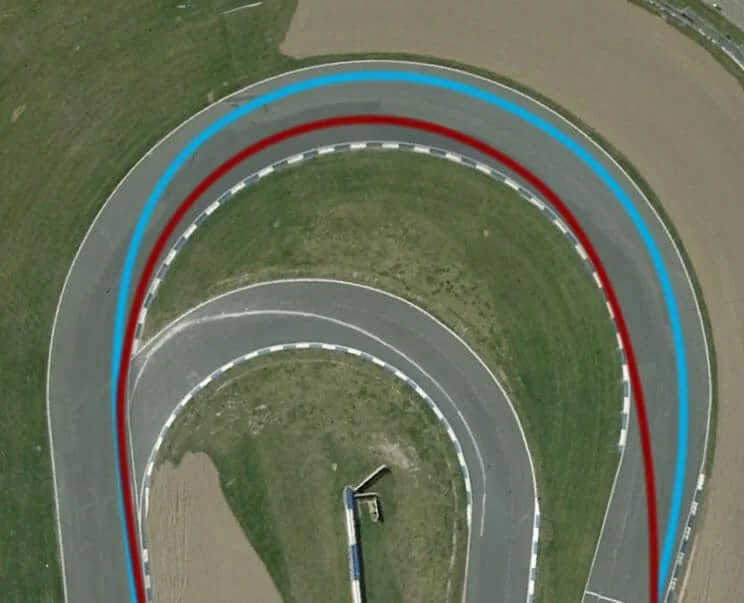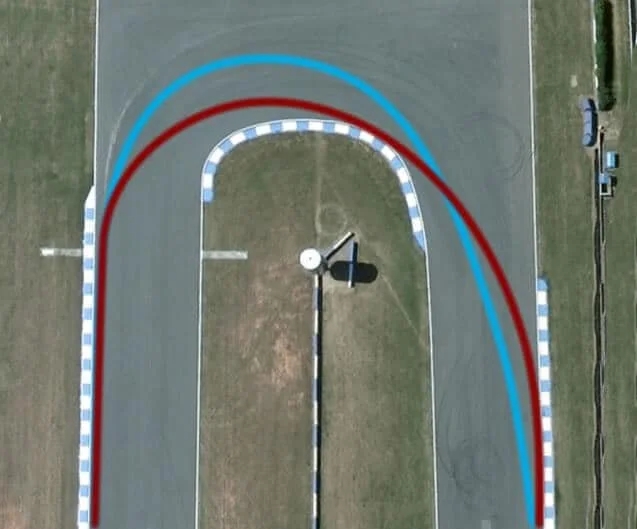A Simple Guide to Driving in the Rain
Driving quickly in the rain is daunting for many. The chances of a spin certainly increase when the grip is drastically reduced, the challenges of finding the wet line leave some people scratching their heads, and the reduced visibility often keeps people from pushing as hard as they know they can.
However, these challenges are all surmountable with the correct approach. A little bit of theory, a soft touch at the wheel, and a willingness to learn can go a long way—not only in terms of improved car control, but also the ability to improvise in challenging conditions.
There are some things to bear in mind before setting out onto a wet or damp track. First and foremost, the careful driver should take a sighting lap to determine where there are puddles and standing water, where there are dry patches, and where they might be able to experiment with some induced oversteer or understeer safely—a slower corner with some runoff might be the place to get a feel for the car as it starts to slide without incurring much risk.
Finding the Wet Line
While the rubber deposited on the dry/conventional line will generally aid grip in dry conditions, it often has the effect of working against the driver. That deposit is rendered slick by the rain, and so it pays to avoid the conventional line as much as possible.
On a corner which rewards a standard out-in-out line in the dry, the line begins a car’s width or so inside the standard line so that braking begins off the polished and rubbered dry line. The turn-in point is usually a little past the dry turn-in point, as this is will allow you to avoid loading the car laterally on a polished part of the track.
It follows then that, through the middle of the corner, the wet line is usually located a car’s width or so to the outside of the dry line, though this varies pretty widely. Though this not the shortest path through the bend, the greater level of grip off the dry line more than compensates for traveling a longer distance.
Using the unused part of the track will offer better grip in the rain. Photo credit: Driver 61*: Blue—Wet line
With this setup, it’s clear that one will have to cross over the dry line—usually at the corner exit. To execute this phase well, it helps to try and have the car straightened as much as possible prior to crossing over the dry line—minimizing the lateral load on the car will help minimize wheelspin, which can severely limit corner-exit acceleration in wet conditions.
In order to “square off” the corner and take more of a “diamond line,” it helps to sacrifice a little mid-corner speed in order to make an earlier, sharper direction change. In other words, get the car pointed straight slightly before the track-out point. The net effect is a significant improvement on speed down the subsequent straightaway, which more than makes up for a mid-corner lull.
As if that weren’t challenging enough, the wet line isn’t exactly a fixed thing. As the rain subsides, returning to the dry line, or at least a hybrid of the two, might start to make sense. If you notice it getting wetter and rivers crossing over the circuit, you’d be wise to avoid them. Your feel for the grip available will determine how quickly you can find the ideal piece of real estate.
Straightening the car for the exit phase helps in low-grip situations. Photo credit: Driver 61*: Blue—Wet line
General Technique
Smoothness makes a much greater difference when the grip is drastically diminished. Because the car cannot be loaded as heavily, giving it a little more time to transfer its weight is crucial and will make the car’s handling much more predictable. This is easiest to implement when making steering inputs since throttle and brake inputs have their own little nuances that make them slightly more complicated.
In the rain, a mild amount of maintenance throttle will help settle the rear in longer, faster corners. Remember that this weight transfer to the rear must be done gently, but if off-throttle coasting is kept to minimum in the quicker bends, the car is less likely to surprise you.
Braking is fairly straightforward, but due to a lower level of grip, the rate of weight transfer must be slowed and the overall pressure should be reduced. Basically, apply the throttle a little more progressively than you would in the dry.
Assuming the tire compound works well in the wet, the braking distances might not be wildly different than they would be on a dry surface, but it’s wise to work up to the braking points a little more conservatively. Despite all this, it’s still far better to reach the threshold of lock-up or ABS intervention earlier in the braking zone since a little cadence braking can solve the problem. This is much easier to manage than carrying too much speed into the corner because of a tentative brake application.
Lastly, if there is an excessive amount of water on the track, your car might begin to hydroplane in places. If this happens, try to minimize your inputs. A light lift off the throttle may help stabilize the car, but make sure not to lift too abruptly, since you don’t want to send too much weight forward.
Don’t Forget the Basics
In most cases, windows can be closed during medium and heavy rain. In light rain and shower conditions, your windows must still stay open. Your car is not made out of paper—a little bit of water will not hurt your interior.
Bring some waterproof containers for your personal belongings. A little Rain-X or comparable product may help visibility.
There are some misconceptions about high performance summer tires suitability in wet conditions. In fact, many 200TW+ tires perform very well in the rain. Many race teams run extreme summer tires like the Maxxis VR1, Yokohama A052, and Bridgestone RE71RS.
If possible, soften your swaybars and damper settings. This will improve weight transfer and generate a little more grip. Also, reduce camber. Not only will the reduced grip prevent the tire from leaning as much as it would in the dry, but maintaining dry camber settings in the rain might cause the car to rotate a little too willingly in the wet. The right sort of camber settings which cause the car to understeer at the limit will help inspire more confidence in the wet.
Finally, increase your tire pressure. It’s tougher to get them up to operating temperatures in the rain, and a stiffer sidewall can help cut through the water.
With that, there’s not much more to say. Sensitivity trumps bravery in the rain, and every top-tier driver understands how to soften their touch and scan a sodden surface for differences in grip. With a little seat time and some careful experimentation, driving in the rain will not only improve your confidence and resilience, but it will strengthen your driving skills in ways which aren’t obvious to the onlooker.
References
Driver61—Circuit Driving in the Rain




